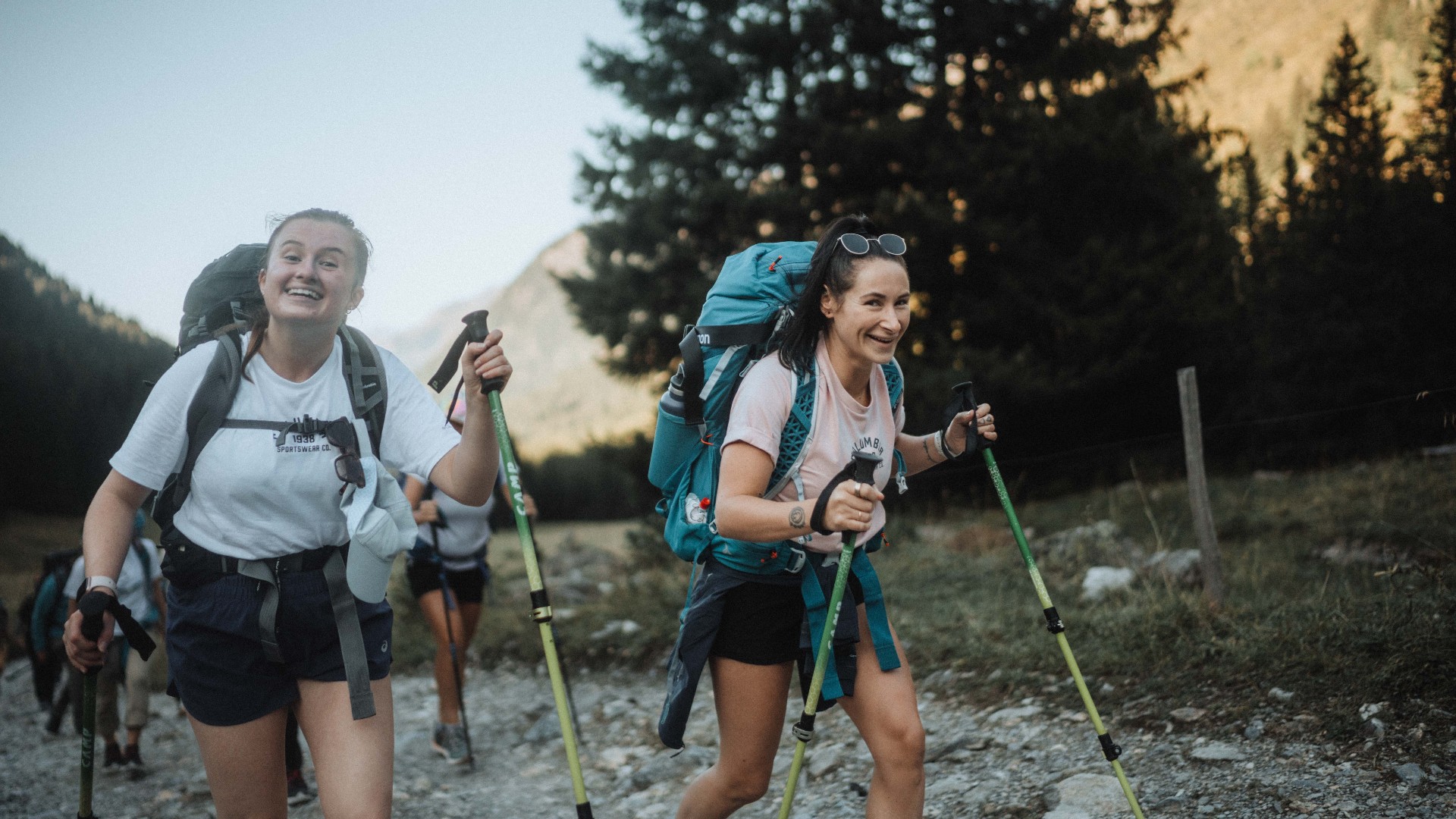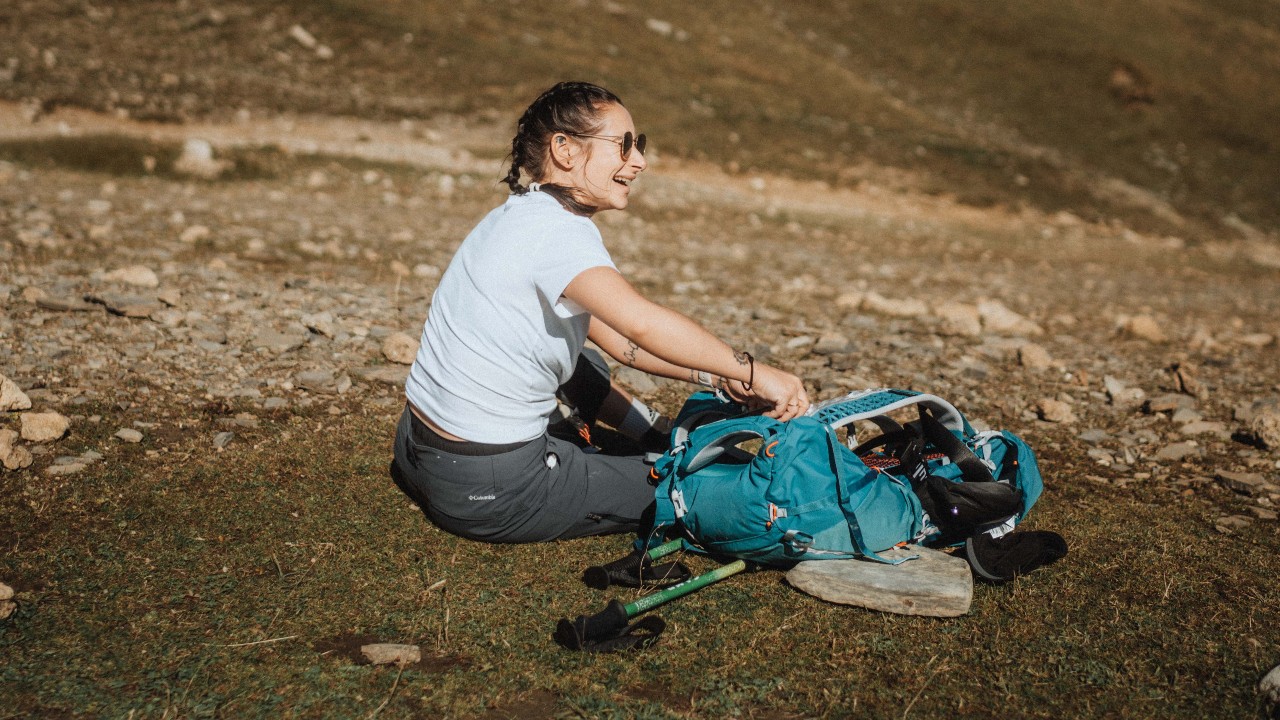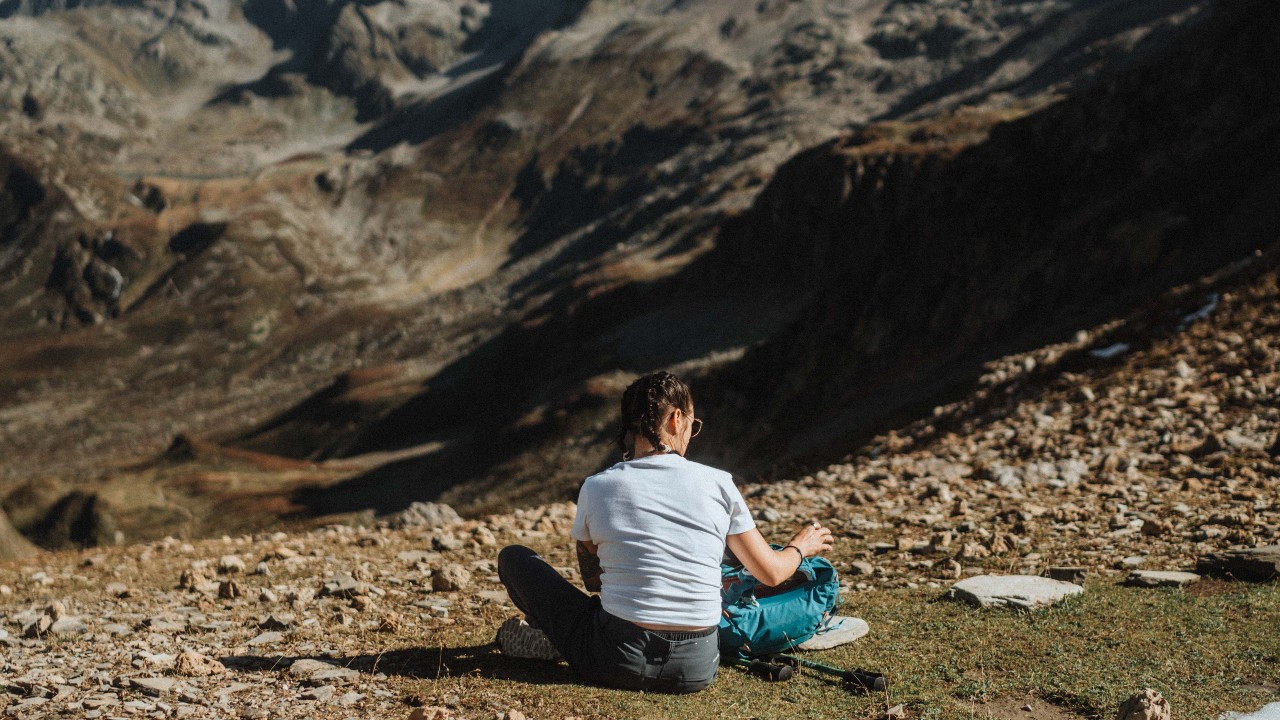
When approached by the infamous Columbia sportswear company to head out on a three-day hike to the French Alps, Les Contamines, my first thought was this — can I do it?
I’m a personal trainer and used to play soccer, so I consider myself quite sporty and outdoorsy. I also train regularly at CrossFit, so I believe I’m pretty fit, as I would need to be for my job. But could I hike the Alps with such limited hiking experience? The answer is yes, but not without many challenges.
Hiking or “proper hiking,” as I refer to it — climbing mountains rather than taking the muddy route through South London woodlands — requires more physical and mental fitness than I could have ever anticipated. Here’s what I learned after three days of hitting the heady heights of the French Alps.
7 lessons I learned while hiking
Being physically fit isn’t the most important (but it helps)
I enjoy strength and conditioning, so I admit to having a fleetingly arrogant thought — “How hard can it be?” Demanding, as it turns out. Physically, and a test of mental resilience.
Just because you train well in one fitness arena, it doesn’t mean you’ll find all fitness easy. Firstly, there are 5 components of physical fitness you need to know: flexibility, cardiovascular, strength, muscle endurance and recovery. If you’re highly skilled at lifting heavy weights, that doesn’t mean you’ll excel with muscular endurance — which you’ll need for hiking long distances — but it helps.
I can throw heavy weights above my head, but it was my endurance that got tested as we transferred to Notre Dame de la Gorge and hiked over three hours and 700 meters elevation to the mountain hut Les Refuge des Prés on day one. My shoulders hurt — the weight of my rucksack and wounded ego, I guess. But I noticed one thing had gone in my favor — I had built a cardiovascular engine that could keep going even when it got tough on my muscles.
Hiking can engage both energy systems
Here’s the main difference between aerobic and anaerobic exercise. Prolonged steady-state exercise uses the aerobic energy system — jogging, swimming and hiking all sit in these camps, and it means your body uses oxygen to make the energy currency ATP, which generates muscle contraction and movement.
Get instant access to breaking news, the hottest reviews, great deals and helpful tips.
More intense activity changes the demands of the muscles and your energy requirements. When adding steep terrain, a faster pace, or explosive movement (or all three) — hello, anaerobic exercise. Here’s when you produce energy without oxygen present by breaking down glucose. It’s a limited supply, but you can make it quickly.
Metabolic conditioning (MetCon) incorporates strength training and switching between higher and lower intensities to improve overall fitness and how your body uses energy. You can also become more metabolically efficient and increase calorie burn, so many athletes train in the mountains for this reason. High-altitude training improves VO2 max — your maximum oxygen consumption threshold — and can boost endurance.
I wasn’t running up this mountain, but I certainly dipped into my anaerobic threshold at times.
Your pace matters

Problem-solving tricky paths, navigating the best way forward and talking myself through the task at hand made me feel mentally invigorated during the inclines.
If you have a long hike like I did, it’s not ideal to find yourself in the anaerobic zone too often. It can happen, but it’s not sustainable. A steep, rocky climb that requires more effort could make you push much harder than during gentle terrain, but the idea is to find a consistent pace you can maintain.
Much of our journey on day one was an uphill climb, and I found that during particularly tricky and steep inclines, I increased speed and maximized my effort to finish it quickly, pushing myself into an anaerobic training zone.
Your muscles will burn, but if you plan to hike long distances, you don’t want to push the intensity too hard too early unless you’re training for an event. Instead, I was advised to keep my pace steady rather than increase my speed (and energy demands).
I felt mentally challenged
I was pleasantly surprised by the mental stimulation over three days of hiking the Alps. I often walked slightly apart from the rest of the group and focused on my steps and breath. Problem-solving tricky paths, navigating the best way forward and talking myself through the task at hand made me feel mentally invigorated during the inclines.
I felt calm

I left my headphones at home and hiked alongside my thoughts instead, and it helped me find joy in simple pleasures — cold water straight from the mountain or the warm sunshine on my skin.
We know the benefits of walking include a calmer mind and reduced anxiety, and research shows walking in nature could increase happiness, cognitive function and energy levels. Being outdoors and connected with nature (even urban nature), has proven to boost mood, aid relaxation and improve sleep.
I always feel relaxed when I absorb nature for a few days. The total stillness, incredible views and vast landscape give me perspective and help me root down in the present moment, just like a meditation. I have adult ADHD and found the mental and physical stimulation of walking outdoors helped to ground me during the hiking experience.
I left my headphones at home and hiked alongside my thoughts instead, and it helped me find joy in simple pleasures — cold water straight from the mountain or the warm sunshine on my skin. I also slept like a baby, but that could be something to do with the gigantic cheese fondue we had for dinner.
Hiking is no joke, but it's great fun
Climbing the French Alps is no jaunt. Although you can wander along chatting to mates at times, hiking is far from easy, even when you have experienced guides at hand to lead the way.
It’s crucial to focus on your steps. The term proprioception refers to the awareness of your body in space, and hiking could help improve balance, stability and coordination, helping to strengthen the mind-muscle connection, which you’ll need if you don’t want to spend time on your butt.
Overall, hiking could improve all areas of fitness, which strangely hadn’t occurred to me, including building muscular strength and endurance, cardiovascular health and stimulating you mentally. It was a pleasant surprise that despite not training for the trip (finding a hiking spot in London isn’t easy), CrossFit workouts had leveled up my maximal strength, cardiovascular and muscular endurance and mobility more than I realized. I felt competent at the hiking level we undertook.
Going down is just as tough
You might think scrambling back down a mountain is the easy part, but no such luck. A precarious place to learn this lesson is descending the Alps at altitude. Thankfully, I wore the Columbia Facet 75 Alpha hiking shoes on my feet, which pretty much superglued me to the rocks in the best way.
As backed up by Harvard Health, hiking through uneven terrain is a great way to strengthen and build lower body muscles and improve ankle stability and balance. The inclines target your posterior chain muscles — the lower back, hip flexors, glutes and hamstrings — while downhill walking hits the quads through knee extension and activates the stabilizer muscles. That shaky leg feeling has never felt so real.
Verdict
Despite the soreness, I felt euphoric hiking the Alps. I enjoyed the sense of pushing outside my comfort zone, enjoying the stillness of nature and testing myself physically and mentally. And besides, a cold beer at the top of a mountain tastes far better than sitting in a London beer garden.
More from Tom's Guide
- I drank apple cider vinegar every day for 10 days like Victoria Beckham, here's what happened to my body
- The best walking workouts to try right now
- I walked 5,000 steps with the Apple Watch 7 and the Garmin Vivoactive 5, here's which was more accurate

Sam Hopes is a level 3 qualified trainer, a level 2 Reiki practitioner and fitness editor at Tom's Guide. She is also currently undertaking her Yoga For Athletes training course.
Sam has written for various fitness brands and websites over the years and has experience across brands at Future, such as Live Science, Fit&Well, Coach, and T3.
Having coached at fitness studios like F45 and Virgin Active and personal trained, Sam now primarily teaches outdoor bootcamps, bodyweight, calisthenics and kettlebells.
She also coaches mobility and flexibility classes several times a week and believes that true strength comes from a holistic approach to training your body.
Sam has completed two mixed doubles Hyrox competitions in London and the Netherlands and finished her first doubles attempt in 1:11.
